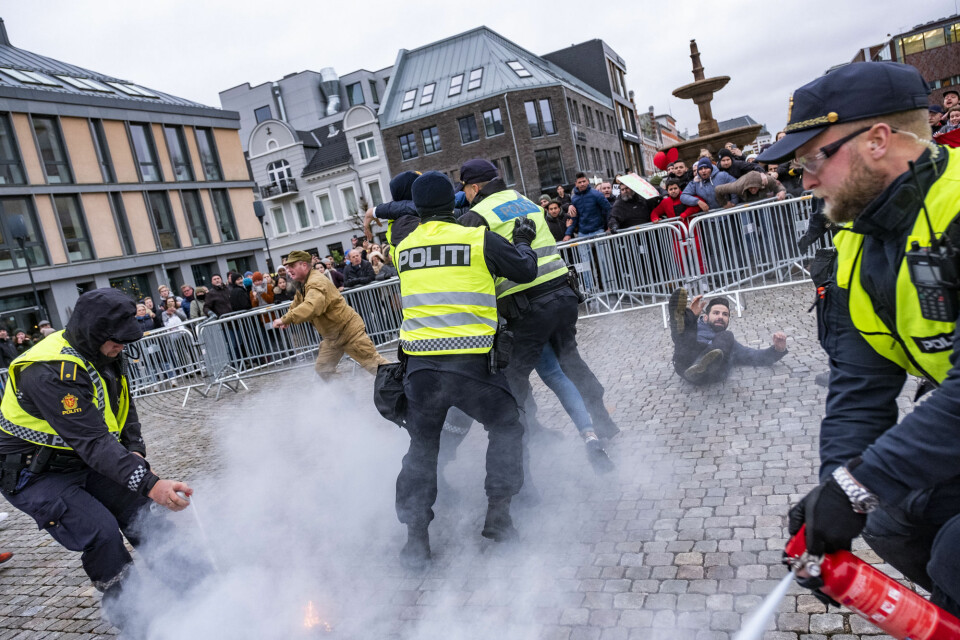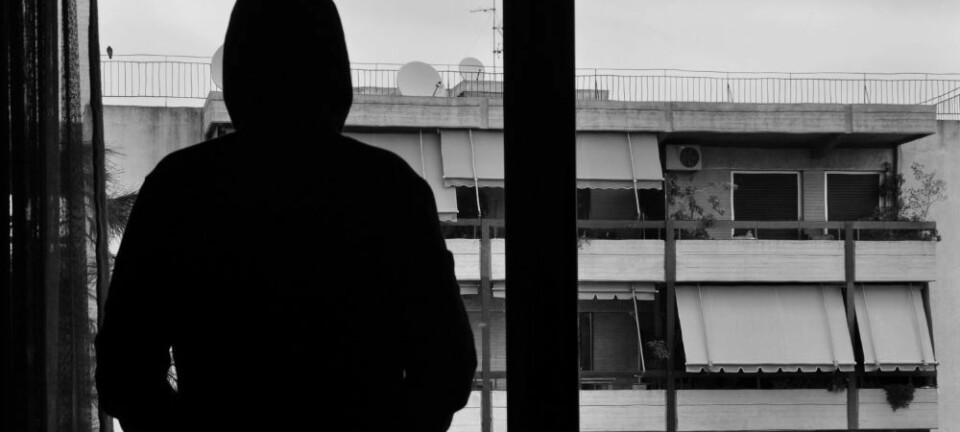
Far right groups in Norway instigate more street provocation than before
New groups are adopting more radical measures.
They march in the streets, burn the Quran and hoist the Nazi flag.
Activists from the far right are trying to be provocative other places than the Internet more often than before, according to a study of seven groups in Norway.
The researchers have tracked what the groups say about their own activities on their websites and on YouTube, and everything the newspapers write about them. They found a total of 553 incidents over eleven years.
“Before 2011 we saw the far right make a shift from the streets to the Internet. Now we’re seeing that they’re on their way back to the streets, whether it’s Stop Islamisation of Norway (SIAN) or the neo-Nazi Nordic Resistance Movement (NRM) demonstrating,” says Anders Ravik Jupskås.
Jupskås is a political scientist and the deputy director of the Center for Extremism Research (C-REX) at the University of Oslo.
New groups
The nationalist groups range from right-wing radicals working within democracy to right-wing extremists who reject democracy and in some cases condone the use of violence.
Their activities change as new groups emerge.
Engagement accelerated when Pegida arrived on the scene in 2015. Of the various groups, this anti-Islamist group has been the one that has gathered most often in the streets between 2008 and 2019. About 200 people showed up for their first demonstration.
The following year, Soldiers of Odin (SOO) were very visible. They patrolled the streets in the evening.
The researchers denote ‘confrontational activism’ when groups tape off the entrance to organizations they don't like or burn the Quran.
Most of the time, however, so-called ‘mailbox activism’ – like handing out flyers and hanging posters – is still the most prevalent.
These were the most common type of activities before 2015. At that time, the People's Movement Against Immigration (FMI) tended to be behind the activities, which peaked in 2012.
For the past three years, SIAN and NRM have been the most active groups.
Little violence
Only five times during the eleven years of the study has the far right initiated violence.
Counter-protesters tend to start the fights far more often. This happened 26 times during the period. In seven instances, it is unclear who started the clashes.
The researchers did not collect reports from the police.
“We may have missed some violent incidents because the groups themselves didn’t want the attention. But serious violence is likely to be picked up by the media,” says Jupskås.
At the opposite end, it’s conceivable that putting brochures in mailboxes is so commonplace for the groups that they don’t bother to mention it on their own websites. If the local newspaper also chooses not to write about it, the researchers won't have captured the activity.
Websites disappearing

Jupskås and his colleagues are writing a scientific article, so their findings have not yet undergone quality assurance by other researchers.
Lars Erik Berntzen does research on anti-Islamic activism in Western Europe. He previously worked at the same centre as Jupskås, now he is a postdoctoral fellow at the University of Bergen.
He encountered challenges when mapping the activities of Pegida and other groups.
“Websites are constantly being shut down and information disappears, especially on Facebook, so there may have been more past events than what we’re detecting here,” says Berntzen.
He still finds it likely that the number of confrontational activities has increased.
Failed activists
Berntzen found that when the media reported on the Pegida demonstrations, many people flocked to the group’s websites afterwards.
“One of the main goals of these stunts is attention. Being seen and heard is challenging and requires more drastic measures,” he says.
Jupskås and his colleagues have not yet investigated whether what the groups do on social media is related to their activities outside the Internet.
“But it’s clear that they haven’t been able to mobilize on the street. About 17 people show up at the demonstrations on average,” says Jupskås.
At the same time, 31 000 people follow SIAN on Facebook.
On the whole, they are quite unsuccessful as street activists, according to Jupskås.
“I think they get too much media attention,” he says.
“None of the groups are particularly lasting. After two or three years they often split into factions.”
Thinks we take them a little too seriously
The groups often disagree on what to do, and personal conflicts abound.
Three of the groups have already almost left the streets: Pegida, Soldiers of Odin and the Norwegian Defence League.
The same people keep coming around. Ronny Alte is a well-known figure who has been in three groups.
Jupskås thinks there’s something comical about the internal quarrels and the constant divisions.
He believes that the community often takes the amateur street activists a little too seriously, but emphasizes that it is important for the police and the authorities to monitor what the groups do.
Berntzen reminds us that the actions of a few people can have major consequences.
"Burning the Quran can generate debate about legislative changes, the limit to freedom of speech and national security with fear of retaliation from jihadists," he says.
Inspired from abroad
Four out of ten activities target immigrants, and three out of ten target Muslims.
The Nordic Resistance Movement differs slightly from the other groups. Every tenth time they mobilize offline, they try to recruit new members. They are against everything from globalization to Jews and gays.
But the groups themselves are quite international. The NRM is governed by Sweden.
SIAN is part of Stop Islamisation of Europe, and Pegida was originally a German organization.
The hard core
Why is provocative activism increasing?

Jupskås wants to do more research on this question. So far he has some theories.
In addition to being inspired by groups in other countries, he thinks that the Norwegian far right reacted to the refugee crisis in 2015. He believes the public conversation about immigration in Norway became more negative and facilitated the growth of the groups.
At the same time, the anti-immigration Progress Party established itself in government and lost its role as a protest party.
Berntzen, for his part, believes that the shift in activities has a lot to do with internal strife in the groups.
“Members argue about who will decide what, and those who are willing to sacrifice something for the cause can use their activism to achieve status. Burning the Quran can present a real risk of being subjected to violence. In some circles that commands respect,” he says.
Constant confrontations with counter-protesters can also harden the lines,” the researcher believes.
Police response sharpened
Police response has also changed in recent years. Far-right groups are now more often arrested or fined than before.
Even more often, the police ask them to leave.
Most often, however, the police are content to simply observe demonstrations and other activities.
The far right took to the streets most often in 2018. In 2019, activity levels dropped slightly. The number of confrontations, demonstrations and violent incidents has not increased since 2016.
Jupskås believes there might have been even more activity if the police did not react as decisively and quickly as they have.
“We’ve seen examples of activism that have been stopped by the police, like when Soldiers of Odin were not allowed to walk in uniform with their hoodies in the streets. It wasn't so much fun anymore then,” he says.
But it could have just as well gone the other way, according to Berntzen. Some animal and environmental protection organizations, for example, have become more extreme when the police tighten their grip.
“The groups may lose support when the less risk-averse drop out, leaving just the hard core. Given the internal leadership struggles, this may increase the likelihood that these hard-core members will push their cause that much harder", he says.
———

































